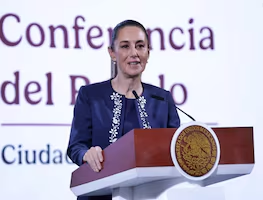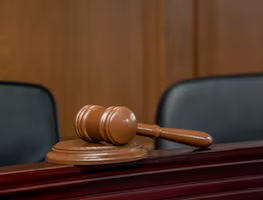Más Información

“En algunos años habrá una secretaria de la Defensa”, afirma subdirectora de la Escuela Militar de Medicina

Claudia Sheinbaum, por definir asistencia presencial a reunión "urgente" de la Celac; migración, tema clave del encuentro

Noroña califica política de EU como hipócrita, racista y fascista; se solidariza con Petro ante deportaciones

Magistrada Mónica Soto propone sustituir al Comité de Evaluación del PJ; plantea someter a insaculación a aspirantes elegibles

Magistrado Reyes Rodríguez propone validar registros de aspirantes con promedio inferior a 8; excluirlos es “estigmatizante”, señala
In the fourth letter colonizer Hernán Cortés sent to Emperor Carlos V , he mentioned that in the Tenochtitlán landscape there was a mountain range that exhaled a lot of smoke. In the search for sulfur , used to make gunpowder , the Spanish colonizer made reference to the Popocatépetl volcano , a hill that fumes , as it was known by the Indigenous people and whose name perfectly describes an image that hasn't changed or lost its meaning through the years.
In her office, at the Volcanology Department from the Geophysics Institute, UNAM, Dr. Juan Manuel Espíndola remembers these historical documents as a testimony of a stamp that has been present in the Valley of Mexico. “The thing is we tend to forget history ,” he says in regards to the evolution of one of the most important active volcanoes in the continent.
“In our country, there are 9 records of very important eruptions in several volcanoes since colonial times . There are also signs of previous phenomenons in (pre-colonial) codex but without a more precise description,” he explains. He emphasizes that these events have been engraved in the part of our territory called the Pacific Ring of Fire , an area located in the coast of the Pacific ocean and characterized for concentrating some of the most important subduction zones in the world, with an intense seismic and volcanic activity .
The number of volcanoes located in the Mexican territory shows important variations, according to several experts. Dr. Espíndola says that this is because it is difficult to create a registry: “In any case, the number depends in what wants to be counted but there aren't as many of the so-called big volcanoes as you'd think.” The expert on the physics of volcanic processes considers that from those type of volcanoes , there are only a couple of dozens of them in the country.
“The peculiarity of the Mexican volcanic belt is that it is located in the most populated area in our territory,” says Espíndola and adds that the larger volcanoes are basically stratovolcanoes , also known as polygenetic because they have formed through several stratums with fragmented material from eruptions , which has hardened in time.
Among the colossus , the Colima volcano is the one that has reported the most activity . The expert explains that the most dangerous episode was registered in 1913 b ut it had also previously reported strong eruptions .
The vulcanologist explains that since the life of volcanoes is rather long and the fact that they have had previous strong eruption doesn't limit the possibility of this happening again. In this sense, the other major volcano is the Pico de Orizaba , also known as Citlaltépetl , which is located in Puebla and Veracruz , and that brings together the volcano and the highest mountain in Mexico . Since the 16th century , it has erupted over a dozen times. “The Pico de Orizaba had a huge episode in 1946 but in general, it has had a very active life, as well as the Seboruco, which had its strongest eruption in 1870-1875, according to the chronicles of Independent Mexico .”
Can we predict the risk?
But how to determine the risk a volcano represents? The expert answers by writing the formula on his desk. “The risk is equal to the vulnerability (multiplied) by the probability, that is, it isn't the same if kilos of ashes fall over a building or on a deserted area than if it falls on several homes with roofs made with steel sheets.” Using that formula, he explains that although the Colima volcano is more active, the communities that live near the Popocatépetl are larger, which means that they are more vulnerable. According to numbers from the CENAPRED , there are at least 25 million people who live less than 100 kilometers away from the Popocatépetl crater .
In contrast and in regards to risk, the Vesuvius is the most important volcano in the world because it is surrounded by large communities. “The Italian vulcanologists are worried because creating contingency plans with these large population groups is quite complex in any place in the world.”
In regards to Mexico , the expert explains that the range of Mexican volcanoes is varied and its history is a collection of sui generis tales but with some similarities, as another series of volcanoes with smaller dimensions and only one eruption . Perhaps the most known monogenetic volcano is Paricutín , located in the state of Michoacán . This volcano changed the lives of the inhabitants of the Purépecha Meseta on February 20, 1943, the day when it was born on a corn field . In the following years, it reached its final height, 400 meters and it's currently inactive.
The expert explains that in the Chichinautzin mountain rage there are more monogenetic volcanoes, over 200, such as Xitle , which has only erupted once but made great changes in the location's topography.
In general, these type of volcanoes , also known as cinder cones, are the result of a single episode, since the magma of the tube that connects the magma chamber and the chimney solidifies. Another category mentioned by experts is the shield volcanoes , defined by its flat morphology and their scarce presence in the country.
Espíndola
remembers that the strongest eruption in the recent history of Mexico took place 37 years ago, in Chiapas , when the Chichonal , also known as Chichón , the volcano erupted. “This 1982 eruption was led by emissions and significant seismicity several months before the strongest eruptions took place but the adequate measure weren't implemented.”
“In the case of the eruption of the Fuego volcano in Guatemala, something similar happened, the warnings were ignored,” he explains and adds that nevertheless, the country learned an important lesson after the Chichón explosion , that you should never minimize the force of a natural disaster. The lesson was reinforced with the 1985 earthquake but these events led to the creation of a Civil Protection System.
General analysis
For Espíndola , the recent decades have also contributed with more tools for the technological and conceptual development in the study of volcanoes . This is the case of the absolute dating techniques with radioactivity or radiometric dating tools , such as radiocarbon , which doesn't look for the birth of a mineral but rather the death of a live element that has been charred and trapped inside the material erupted by the volcano . “More information is obtained about the large eruptions because they leave big deposits and the material prevails despite erosion .” For months, geologists look for this remains and in the end, they are able to trace the age of a volcano , as part of a diagnosis that helps to know better a 730,000-years-old patient, as in the case of the Popocatépetl .
The researcher uses the analogy of a patient going through a diagnosis to explain that the more tests and information about its family are obtained, it will be easier to understand its risk symptoms. It is about clearly perceiving the changes that are possibly related to an eruption . In this sense, he explains, that geophysical evaluation tools are useful, for example, in the Earth's magnetic field in volcanic areas , which is affected by gravity changes , as the result of the mass that accumulates inside these volcanoes .
There are also geochemical changes : “The material that is expelled has many gases that penetrate the groundwater reserves . The analysis of the nearby hydrological systems , as well as (the direct analysis) of the gases provide more elements to determine its state.” Some of the chemical analysis of the vents are carried out through correlation spectrometry (COSPE C).
Dr.
Espíndola
explains that information can't be discriminated and all the volcanoes need to be studied in order to have more tools to face any natural disaster. He says that recently, together with a group of experts, he was studying the San Martín Volcano, in the Tuxtlas reserve and has faced with suspicious looks from the inhabitants, who told them to monitor the Popocatépetl.
“Unfortunately that's just ignorance. All volcanoes should be studied, not only the active ones,” he explains, after mentioning chronicles from 1793 about this volcano , that claim people used candles in the middle of the day to get through the city because of the large amount of ashes .
“The San Martín volcano, since it is in a reserve, it will probably won't affect in such a strong way as the Colima and Pop o could but the emission of a large amount of ashes can create a lot of damages. By knowing the story of a volcano in detail, it provides clues for its future. Going back to the doctor analogy, every antecedent and symptom is important.”
gm








